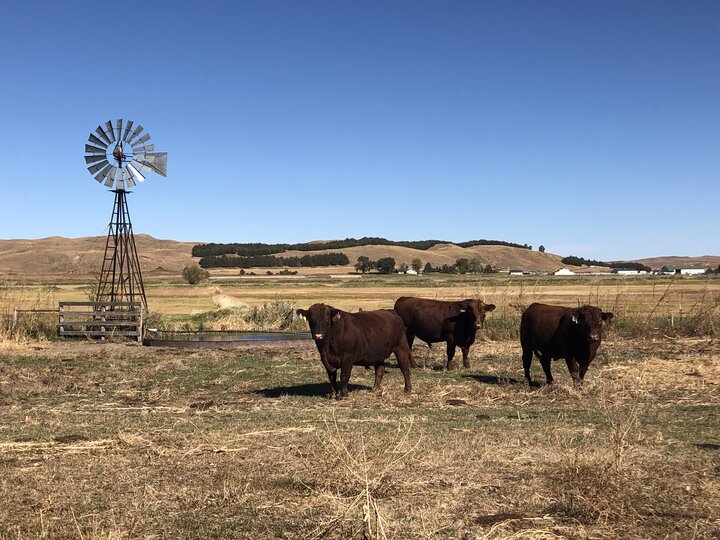We are nearing spring turnout and breeding season, and with that, many producers may be getting bulls tested right before turnout. So, what should producers be considering to maintain herd health within their mature bull battery?
Bovine trichomoniasis “trich” testing – what is it?
Trichomoniasis (trich) is a venereal disease that causes infertility, open cows, and the occasional abortion in cows and heifers. Bulls carry the protozoa in their prepuce and transmit it to cows through breeding. Clean bulls can also become infected by breeding cows that are infected with trich.
Listen to this past podcast which dives into “Understanding Trichomoniasis and its Impact as a Reproductive Disease”.
A few important things to keep in mind about trichomoniasis as we start testing bull this spring
There are no clinical signs of infection in bulls and very few in cows. Bulls that are infected do not show systemic disease, swelling, drainage or any other sign that would lead us to suspect infection. The only way to identify infected bulls is to perform preputial scraping and diagnostic testing to identify the presence of the organism in the preputial folds.
Once infected, bulls remain infected for life. Because the organism lives in the preputial folds and is technically “external,” the bull's immune system will not identify or respond to the organism to clear the infection. There is no treatment for trichomoniasis, and infected bulls should be culled through slaughter-only channels.
What to consider with your herd?
Bulls are the route of transmission through a cowherd and when an infected bull breeds a cow, she will likely be infected. Subsequent matings by other bulls in the herd transmit the organism to uninfected bulls, which is why it is common to find multiple infected bulls in a bull battery once a single trich-positive bull has been identified.
Trichomoniasis infection in the cow herd is often suspected when producers notice cows that should have settled early in the breeding season continue to come into heat, often two to three cycles later than expected. This is because cows will mate and conceive, but then later develop pyometras (uterine infections) and experience embryonic loss. Once this occurs, unlike bulls, the cow’s immune system will respond and clear the infection, but she will return to cyclicity only after the uterus returns to health, generally 60 days or more later.
While most cows will clear the infection and go on to conceive and carry a calf to term, there is a danger that individual cows can develop a carrier state and serve as a continual reservoir of infection in a positive herd. This potential for a carrier state is why it is recommended to cull any open cows in a positive herd to slaughter-only channels, along with the infected bulls. There is no reliable test for trichomoniasis to screen for carrier cows.
Are there any regulations regarding Trich testing in Nebraska?
Trichomoniasis is a reportable disease in Nebraska, which means the State Veterinarian’s Office will have input on how positive cases are managed. This is mainly to ensure that disposal of infected individuals is through slaughter-only channels to prevent the spread of the disease to other operations. Additionally, movement of mature (greater than 18 months of age in most cases) and/or non-virgin breeding bulls across state lines will require trich testing to document negative status. Actual testing procedures and timing is determined by the state of destination. Producers that may be marketing bulls or moving bulls to grazing pastures out of state should consult with their veterinarian well in advance of shipment to ensure that all regulatory requirements can be met.
What is the value of a breeding soundness exam?
A breeding soundness exam is a point-in-time measurement that we encourage producers to have done on bulls about 4-6 weeks before the breeding season to ensure they are satisfactory breeders. We dive into these topics and provide a spreadsheet resource for producers to evaluate the benefit-cost of getting a BSE done on their bull battery in this article: https://beef.unl.edu/beefwatch/2022/how-valu-bull-are-breeding-soundness-exams.
Producers should expect trich testing to be on the agenda when they book breeding soundness exams of their mature bull batteries. Trichomoniasis is a devastating venereal disease that can move through a herd silently until it is too late. The investment in identifying and removing infected bulls before the breeding season is a small price to pay to avoid reproductive failure of the cow herd.

